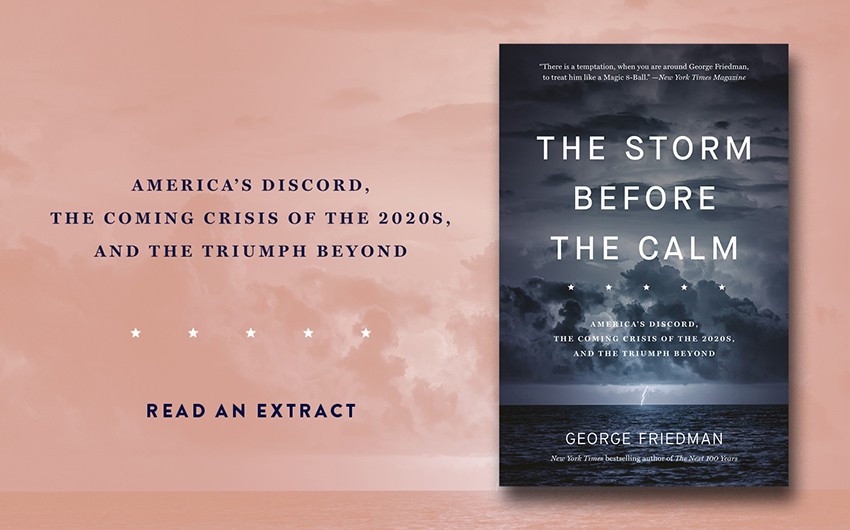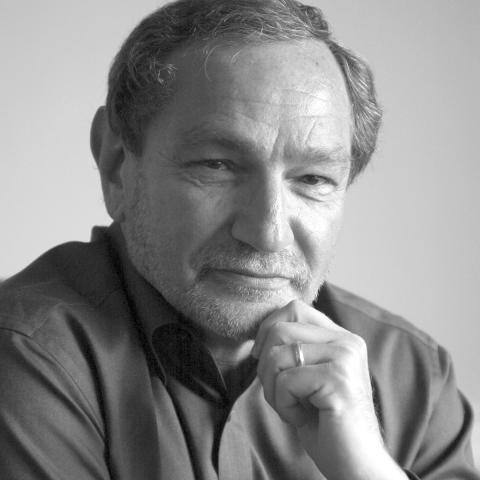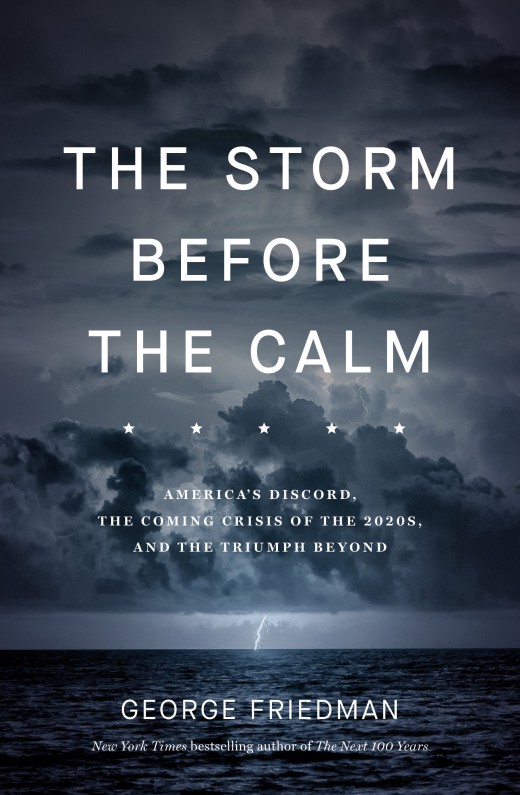News

News >
Read an extract: The US election from The Storm Before the Calm
George Friedman on what led to the current political crisis in America, and what the 2020s will hold. Read an extract from The Storm Before the Calm.
When Donald Trump emerged as the winner of the American presidency, I was in Australia. The announcement came shortly before noon, and I spent the day – and the visit – being asked in various conferences and by perplexed media hosts how Trump could have won and what it would mean. The election was taken as seriously in Brisbane and Sydney as it was in Cincinnati or New York. Already working on this book, I tried to explain that the focus should be not on the man but on his place in the cycle. It did not go over well, because the fascination was with his personality
That remains the case, but I will argue that that is a mistake.
Donald Trump’s election in fact signalled the beginning of the lead-up to the fourth institutional cycle and to the sixth economic and social cycle. The current institutional model has been increasingly unable to function successfully, and the key lies in redefining the relationship of the federal government to itself. The economic and social crises have created a massive decline in the condition of what had previously been a pillar of American society: the industrial workers. Because there has never been a period when both cycles reached their crises almost simultaneously, we can expect the 2020s to be an exceptionally unstable time. The lead-up to the 2020s has started that way, with an election in 2016 in which each candidate clearly represented a segment of society that was at odds with the other. And the election ended in a virtual tie, with Hillary Clinton winning the popular vote, and Trump the Electoral College vote. That, more than anything, indicated how tense a time it would be. The 2016 election signalled that the political system had sensed the underlying tension, just as happened in the 1968 elections. The political conflict of 1968 would not be closed until 1980. So too the political tensions of 2016 won’t be closed until 2028. First recall that there has always been a politician from the declining class who holds the final presidency in a cycle and oversees a failed presidency. This will likely be a Democrat standing for the technocracy – a conventional Democrat in the sense that Jimmy Carter was a conventional Democrat, Herbert Hoover was a conventional Republican, and so on. Such terminal presidents, with the exception of Ulysses S. Grant, are one-term presidents. So I will surmise that the final president of this cycle will be elected in 2024 (or in 2020 if he is a two-term president).
As cycles come to an end, the first indication is the emergence of political instability that can begin more than a decade before the shift to a new cycle.
Under Barack Obama, the challenge to the economic model became more intense, with the emergence of the Tea Party. And with the emergence, there was more intense questioning of the right of the federal government to intrude on society both on ideological and on practical grounds. At the same time, the Democrats became more dogmatic on the economic principles and the ideological and cultural issues. The two parties began to drift apart. However, the mainstream of the Republican Party, the sector where presidential candidates were spawned, remained intact.
But underneath the surface, the economic situation was intensifying. The year 2008 was the breaking point, where the impact of the subprime crisis hit the declining class more directly than the technocracy. As important, it appeared to the white industrial class that the federal government was committed to protecting the interest of all classes but theirs, while the ability of the federal government to function at all was declining.
The white industrial class believed that both the technocracy and the federal government had turned against them, their economic problems, and their cultural values and ideology. The technocrats were doing relatively well economically. Their moral principles were making inroads, and the general ideology they propounded was dominant. From the point of view of the declining class, both political parties were indifferent if not opposed, in varying degrees, to their interests.
Albeit declining economically and socially, the white industrial class was still vast, disorganised but holding common principles. They were going to be able to force the issue, particularly in the Republican Party, where the weakness of the power structure was revealed by the Tea Party. If they became organised, they would become an irresistible force in the party. Inevitably, someone would come along to organise them, but it had to be someone outside the party, someone not trapped in the web of relationships that accepted the basic economic and social model.
The leader was less important than the sentiment that had formed. He simply had to recognise it was there and speak to it. None of the other Republicans could do that. They could not reject basic principles such as free trade and respect for immigrants. What the rest of the Republican Party didn’t realise is that what had been a marginal trend in the Republican Party had now become dominant. Failing to understand that, they could not speak to this class.
Donald Trump promised to make America great again. This made no sense to the rest of the party or to the technocracy, both of whom believed that America not only had retained its greatness but was enhancing it. For the members of the declining industrial class, America was, in fact, in decline because their own position was becoming increasingly tenuous. Trump insulted, promised, raged; he did everything a good politician would never do. But that was precisely his strong point. He did not speak like a conventional politician. What the rest of the Republican field failed to understand was the degree to which the conventional politician was by this point held in contempt.
Trump was incomprehensible to the technocrats because the white industrial class was incomprehensible to them. In the same way that the Democrats could not fathom Ronald Reagan’s victory or the Republicans Franklin Roosevelt’s, Trump was incomprehensible. The focus was on Trump, his peculiarities, and his outrageous comments. But that was not the issue, any more than Hillary Clinton’s server was the issue. Clinton acted as if her position were already won because Trump was self-evidently unacceptable and because the people who supported him were considered marginal, the ‘illness’ that had to be cured.
They were not marginal, nor were they in control. The 2016 election was essentially a tie resulting in a noisy gridlock. Trump was locked in institutionally and locked in by his nongovernmental opposition, particularly the media. He could not convert his opponents, nor could his opponents convert his supporters.
Therefore, Trump does not represent the transition to the new era. He is instead the first tremor who appeared decisive to his supporters and frightening to his opponents. Trump is the first indicator of a struggle between two classes. But while the ascending class has not yet reached its limit, the descending class is continually bleeding power. That means that the 2020s will be more complex than even the current configuration hints at.
This is an edited extract from The Storm Before the Calm: America's Discord, the Coming Crisis of the 2020s, and the Triumph Beyond, out now.
Share this post
About the author
George Friedman is the founder and chairman of forecasting company Geopolitical Futures. For eighteen years he was chairman of the global intelligence company Stratfor, which he founded in 1996. The author of six books, including the New York Times bestseller The Next 100 Years, Friedman lives in Austin, Texas.
More about George Friedman




